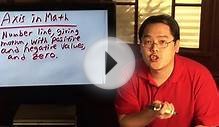
 Ordering, sequencing, and patterning are important foundational skills for mathematics. Child care providers can build young children's early math skills by help them learn sequencing, seriation, and patterning.
Ordering, sequencing, and patterning are important foundational skills for mathematics. Child care providers can build young children's early math skills by help them learn sequencing, seriation, and patterning.
- Sequencing is the ability to create and identify patterns. For example, children may stack blocks in a pattern of red, blue, red, blue, and so on. As adults, using calendars is one way we use sequencing skills. We look at a calendar and look for the pattern that helps us predict what day or month comes next. For preschoolers, sequencing means knowing which number comes next.
- Seriation is arranging objects in order by size, location or position. Have you ever asked children to arrange objects from smallest to largest, largest to smallest, shortest to tallest or thinnest to thickest? You’ve been teaching seriation. Young children who understand seriation can put numbers in order from lowest to highest, smallest to largest. Eventually, they will come to understand that 6 is higher than 5 or 20 is higher than 10.
- Creating Patterns Having children copy patterns or create patterns of their own (such as red, blue, red, blue, red, blue) may seem simple, but it is a great way to help children recognize order in the world and prepare for later math skills, such as multiplication. Child care providers can begin exposing young children to patterns - long before they are ready to learn multiplication facts - by having them make groups and count the total number of objects. For example, four groups of three objects each make a total of 12 objects (4 X 3 = 12).
YOU MIGHT ALSO LIKE

definition of equivalence class math

What Is the Definition of an Axis in Math?

Math 3 Notes The Formal Definition of a Parabola Part 3









